New Sony A7R III (α7R III) is here. Press release and first thoughts.
Sony today announced an impressive addition to their full-frame mirrorless camera line-up, the α7R III (model ILCE-7RM3)
“Thanks to an evolutionary leap in image processing power and efficiency, the new α7R III combines a high-resolution 42.4 MPi back-illuminated Exmor R CMOS image sensor with impressive shooting speeds at up to 10 fpsii with full AF/AE tracking, as well as beautiful image and 4K6 video quality, wide 15-stop9 dynamic range, high sensitivity with noise reduction of almost a full stop4 and more. With these immense capabilities and a compact, lightweight body, it’s an extremely versatile tool for photographers, videographers, multi-media creators and all other types of professionals that demand reliability, flexibility and versatility.”
Basic specification:
- Innovative Full-frame Mirrorless Model Offers 42.4 MP High-Resolution, 10 fps Continuous Shooting, Fast and Precise AF Performance in a Compact Body
- 35mm Full-Frame 42.4 MP Back-Illuminated Exmor R™ CMOS Image Sensor with Evolved Image Processing
- Continuous Shooting at up to 10 fps with either Silent Shooting or Mechanical Shutter and full Auto Focus/Auto Exposure tracking
- 399 phase-detection AF points covering 68% of image area, 425 contrast AF points and approximately 2 times more effective Eye AF
- 5-axis optical in-body image stabilization with a 5.5 step shutter speed advantage
- High Resolution 4K Movie Shooting with full pixel readout and no pixel binning
- Completely redesigned for professionals, including upgraded Auto Focus, Dual SD Card Slots, Extended Battery Life, SuperSpeed USB
- (USB 3.1 Gen 1) USB Type-C™ Terminal and more
- Compact, Lightweight body at only 650gr
Press release:
A New Level of Image Quality
The 42.4MP high-resolution, back-illuminated Exmor R CMOS image sensor utilises a gapless on-chip lens design and AR (anti-reflective) coating on the surface of the sensor’s seal glass to dramatically improve light collection efficiency, resulting in high sensitivity with low-noise performance and wide dynamic range.
Sony’s new α7R III also features a new front-end LSI that effectively doublesiv the readout speed of the image sensor, as well as an updated BIONZ X™ processing-engine that boosts processing speed by approximately 1.8 times compared to the α7R II. These powerful components work together to allow the camera to shoot at faster speeds while also enabling its impressive ISO range of 100 – 32000 (expandable to ISO 50 – 102400 for still images) and massive 15-stop[ix] dynamic range at low sensitivity settings. This ensures outstanding overall performance at all settings and in all shooting conditions.
This new full-frame model was built without an optical low pass filter to maximise resolution, while also having the ability to output 14 bit RAW format even when shooting in silent or continuous mode. The camera is equipped with an innovative 5-axis optical image stabilisation system that has been fine-tuned to support its high-resolution shooting capacity, resulting in a 5.5 stepv shutter speed advantage, the world’s highest[x] compensation performance for an image stabilisation system. There is also a new low-vibration shutter that reduces vibration and image blur in all modes, including the high speed 10 fps shooting, as well as several advancements in accurate colour reproductions of skin tones.
High-Performance AF and AF/AE Tracking at up to 10 fpsii
The innovative new α7R III full-frame mirrorless camera is equipped with a refined image processing system that allows it to shoot full 42.4MP images at up to 10 fps with continuous, accurate AF/AE tracking for up to 76 JPEG / RAW images or 28 uncompressed RAW images[xi]. This high speed 10 fps mode is available with either a mechanical shutter or a completely silent shooting[xii], adding to the immense flexibility of the camera. The camera can also shoot continuously at up to 8 fps[xiii] in live view mode with minimal lag in the viewfinder or LCD screen. These high speed options ensure that fast moving subjects can be captured with extreme accuracy and incredible image detail.
For added convenience, while large groups of burst images are being written to the memory card, many of the cameras key functions are operable, including access to the ‘Fn’ (Function) and ‘Menu’ buttons, image playback and several other menus and parameters[xiv] including image rating and other functions that facilitate on-location image sorting.
Additionally, if there is fluorescent or artificial lighting present in a shooting environment, users can activate the Anti-flicker[xv] function to allow the α7R III to automatically detect frequency of the lighting and time the shutter to minimise its effect on images being captured. This minimises any exposure or colour anomalies that can sometimes occur at the top and bottom of images shot at high shutter speeds.
The upgraded focusing system of the α7R III is comprised of 399 focal-plane phase-detection AF points that cover approximately 68% of the image area in both the horizontal and vertical directions. There is also 425 contrast AF points, an increase of 400 points compared to the α7R II. This advanced system delivers AF acquisition in about half the time as the α7R II in low-light conditions, with tracking that is approximately 2 times more accurate as well. The acclaimed Eye AF feature is also approximately 2 times more effective, and is available when utilising Sony’s A-mount lenses with an adapter.[xvi]
Additional improvements in focusing flexibility include AF availability in Focus Magnifier mode, focal-plane phase-detection AF support when using A-mount lenses[xvii], an ‘AF On’ button, a multi-selector or ‘joystick’ for moving focusing points quickly, flexible touch focus functionality and much more.
High Quality 4K for the Video Professionals
The new α7R III is exceptionally capable as a video camera, offering 4K (3840×2160 pixels) video recording across the full width of the full-frame image sensor. When shooting in Super 35mm format, the camera uses full pixel readout without pixel binning to collect 5K[xviii] of information, oversampling it to produce high quality 4K footage with exceptional detail and depth.
A new HLG (Hybrid Log-Gamma)[xix] is available on the α7R III that supports an Instant HDR workflow, allowing HDR (HLG) compatible TV’s to playback beautiful, true-to-life 4K HDR imagery. Further, both S-Log2 and S-Log3 are available for increased colour grading flexibility. The camera can also record Full HD at 120 fps at up to 100 Mbpsvi, allowing footage to be reviewed and eventually edited into 4x or 5x slow motion[xx] video files in Full HD resolution with AF tracking.
Build, Design and Customisation for Professionals
Sony’s newest full-frame camera is equipped with a variety of enhanced capabilities that give it a true professional operational style. These include dual media slots, with support in one slot for UHS-II type SD memory cards. Users have a variety of options for storing their content, including separate JPEG / RAW recording, separate still image / movie recording, relay recording and more. Battery life has been greatly extended as well, as the new camera utilises Sony’s Z series battery that have approximately 2.2 times the capacity of the W series battery utilised in the α7R II.
The α7R III features an upgraded high-resolution, high-luminance Quad-VGA OLED Tru-Finder™ with approximately 3,686k dots for extremely accurate, true-to-life detail reproduction. The Tru-Finder, also found in the acclaimed Sony α9 camera, utilises a ZEISS® T* Coating to greatly reduce reflections, and has a fluorine coating on the outer lens that repels dirt. It also has a customisable frame rate, with options of either 50 fps or 100 fps[xxi] to best match the action. The LCD screen has been upgraded as well, with a resolution of 1.44M dots and WhiteMagic™ technology that improves viewing in bright, outdoor conditions. “Standard” or “High” display quality settings are also available for both the viewfinder and monitor as well. “High” takes advantage of the large amount of data read from the 42.4MP sensor to provide extra fine viewfinder and monitor displays for a more natural view.
The new camera also offers a multi-selector joystick that provides a fast, efficient way to shift focus points, as well as an ‘AF ON’ button to activate autofocus when shooting stills or movies.
The new α7R III allows for convenient transfer of files to a smartphone, tablet, computer or FTP server via Wi-Fi®, while also including a sync terminal, enabling external flash units and cables to be connected directly for convenient flash sync. A SuperSpeed USB (USB 3.1 Gen 1) USB Type-C™ Terminal is also available for increased flexibility in power supply or connected accessories, as well as a faster image transfer speed when connected to a PC.
New “Imaging Edge” Software Suite and Pixel Shift Multi Shooting Mode
New with the α7R III is a software suite called “Imaging Edge” that extends the creative capabilities of the entire shooting process – from pre-processing to post-processing. “Imaging Edge” provides three PC applications called ‘Remote’, ‘Viewer’ and ‘Edit’, available for free download, which support live-view PC remote shooting and RAW development.
Also making its debut on the versatile α7R III is a new Pixel Shift Multi Shooting mode, which takes full advantage of the advanced 5-axis optical in-body stabilisation to create beautiful true-to-life, super-high resolution composite images. In this mode, the camera precisely shifts the sensor in 1-pixel increments to capture four separate pixel-shifted images containing a total of approximately 169.6 MP[xxii] of image data. These four images can be composited together and processed utilising the new “Imaging Edge” software suite. This ultimately results in a still image with overwhelming resolution and an unprecedented level of colour accuracy, and is ideal for photographing architecture, art or any other still life photography subject with many intricate details and colours.
Pricing and Availability
The Sony α7R III Full-frame Interchangeable Lens Camera will ship in Europe in November 2017, priced at approximately €3500.
[i]Approximately, effective
[ii]Up to 10 fps in continuous “Hi+” mode, and up to 8 fps in continuous “Hi” mode. Maximum fps will depend on camera settings
[iii]Approximately 68% of the image area in both the horizontal and vertical directions
[iv]Compared to the α7R II, according to Sony testing
[v]CIPA standards. Pitch/yaw shake only. Planar T* FE 50mm F1.4 ZA lens. Long exposure NR off
[vi]A Class 10 or higher SDHC/SDXC memory card is required for XAVC S format movie recording. UHS speed class 3 or higher is required for 100 Mbps recording
[vii]In Super 35mm mode.
[viii]Approximately
[ix]Sony test conditions for still images
[x]Among digital cameras with a full-frame image sensor. As of October 2017 press release, based on Sony research
[xi]“Hi+” continuous mode with UHS-II compatible SDXC memory card. Sony test conditions.
[xii]Some distortion may occur with fast-moving subjects of if the camera is moved sideways rapidly
[xiii]“Hi” mode. Maximum fps will depend on camera setting.
[xiv] Not all menu parameters can be edited while data is being written to the memory card
[xv]Only 100 Hz and 120 Hz flicker is detected. Continuous shooting speed may decrease. Flicker-free shooting is not available during silent shooting, BULB exposure, or movie recording
[xvi]With SSM or SAM lenses only. Eye AF not supported for movie recording. AF-C can only be used when the “Phase detection” AF system is selected, but focus is fixed at the first frame during continuous shooting in any mode other than “Continuous: Lo” (Hi+, Hi, Mid).
[xvii]With SSM or SAM lenses only. With the LA-EA3 mount adapter. Focal plane phase-detection AF not supported for movie recording. AF-C can only be used when the “Phase detection” AF system is selected, but focus is fixed at the first frame during continuous shooting in any mode other than “Continuous: Lo” (Hi+, Hi, Mid).
[xviii]15-megapixel
[xix]Connect this product to an HDR (HLG) compatible Sony TV via a USB cable when displaying HDR (HLG) movies
[xx]Sound not recorded. Class 10 or higher SDHC/SDXC memory card required
[xxi]In PAL. 60fps or 120fps in NTSC
[xxii]Image size after compositing is approx. 42.4 million (7952 x 5304) pixels.
My thoughts:
Sony A7R III has on the paper lot to offer for those who might consider an upgrade or for the new users among professionals and advanced enthusiasts. That is however always the case when the new camera is announced and it is the part of the show to glorify all those technological innovations. I would like to share my first impressions and thoughts from the user point of view.
Image quality at base ISO – Should I upgrade?
If you are already using Sony A7R or A7RII, I doubt that you will see a dramatic increase in the image quality at base ISO settings. However, there are a couple of things that might positively surprise us. While a slight increase in dynamic range of approx. 0,5 EV will be hard to notice in the real life IMHO, there are a few improvements, that I am really curious to see in a real life.
- Sony says they are introducing improved color reproduction of the skin tones. This can be a big thing if you are shooting a lot of portraits since attractive color reproduction of skin tones was a domain of Canon and Sony and Nikon were often criticized for shifting tones toward green/yellow. I am eager to see new Sony skin colors!
- Pixel Shift Multi Shooting Mode. For the still life photography, this technology, while not new, can be of a great benefit in some situations. By taking 4 images, each shifted (using sensor stabilization system) by 1px, we can recreate a single image of approx. 170 MP resolution. Together with the new camera, Sony is introducing also new software for postprocessing its files and tool for combining those four pictures into one, is part of it. 170 MP should not only deliver great details and color accuracy but in some cases, it might also help larger cropping, if needed. Let’s say that we are shooting architecture. The client should be able to print a high-quality billboard from the single file and then crop the close-ups of the different details in the image, for the use in the print – just one hypothetical use of this function. Be aware that for the landscape though, pixel shift might not always deliver better results, since background might have moving elements (trees, water, people etc.) but even so, in the resulting four images, there will be plenty of data for creative post-processing.
- Ability to output 14-bit RAW format even when shooting in silent or continuous mode. This is a great news for all wildlife and sports photographers among others. No more limitation to “crippled” 12 bits.
There are still few things that we should see in reality, such as a newly improved sensor surface with lower reflexiveness. This can result in a further suppression of the sensor caused flaring.
Based purely on the image quality improvements and my photography personnel needs, however, I won’t upgrade from my Sony A7r II. In fact, I still have A7r original and I barely see an advantage of A7R II for my daily usage. But as we move to the medium and high ISO, situations start to change…
High ISO performance:
Sony A7R III claims to deliver 1 stop of the improved sensibility of their new sensor. This would be very impressive if true, because A7R II is already very good up to 6400 ISO, especially when downsized for the web usage. Getting 1 extra EV sounds very encouraging. I am not shooting much above ISO 1600 and most of my shots are taken at ISO 100. But I can see many events, wedding, street, astro and other photographers, who would upgrade rightfully for this reason only. For me, still not enough…
Auto Focus and Shooting Speed:
Sony claims that AF is approx. 2 times faster in continious mode, which is particularly important for the subject tracking. The capability of the camera to detect and follow eyes in the eye-af mode is also doubled according to the Sony. With it’s 10 f/s, compared to 5 f/s of Sony A7R II, also shooting speed is doubled, so I think we can agree that A7R III is twice as fast as its predecessor – A7R II. This is one of the area where we should wait to see first field tests. On paper it looks very attractive though. Consider also larger buffer for more than 76 compressed RAWs and more importantly, you should be able to use some camera functions such as Fn menu and playback during recording to the card.
There is also note about A-mount AF support, which I don’t really know what it is, but if it means that it will be possible to use A-mount lenses with LA-EA3 without limitation, than it is a great feature!
Auto Focus is one of the field where A7RII has beaten to dead its predecessor A7R original. I am sort of happy with the A7R II auto focus, but I don’t use it for tracking often. 90% of my shots are in AF-S mode, so for me, this is still not a good reason to upgrade. If you shoot action, running kids, events, sport etc., and if Sony A7R III proofs to be twice as fast as A7R II, than it should be a no brainer.
Operational Speed and user comfort:
This is for me area in which I find most reasons for the upgrade. Starting with improved interface (known from A9), slot for two memory cards with all expected writing modes (cloning, combined space, JPEG on one, RAW on the other card etc.), much improved EVF (one of the weak spots of Sony A7R II), better live view and LCD, functions such as automatic flickering detection (fluorescent and artificial lighting) and synchronization, 2.2 times longer battery life (even if it means new batteries and chargers) and overal faster camera response, those are all very good reasons to consider upgrade.
Video:
I don’t shot video too often, but there are some nice features that new camera offer. Recording at full width of the sensor and without pixel binning whren shooting in Super 35 (APS-C) mode, together with S-log3, Hybrid Log-Gamma for HDR video workflow in the entire processing and slow motion shooting (full HD at 120 fps) with AF tracking enabled are very advanced features for some serious video productions.
Price:
It is what it is. At approx. 3600 EUR it is the same starting price point like its predeccessor when introduced.
Will I upgrade? Yes I will, but I will not rush. Sony A7R II (and even my original A7r which now has over 150K actuations and still works without any problems) are good enough for what I am doing and I don’t feel any serious limitation on that side. Most important part of the camera for my usage – sensor, is not such a huge step forward to push me into sudden upgrade. Considering that the price of the Sony A7RII is basically split in half after 2 years, I might wait a while before I go for it. But if I manage to get the camera for the thorough test, I might well keep it.
What are your thoughts?
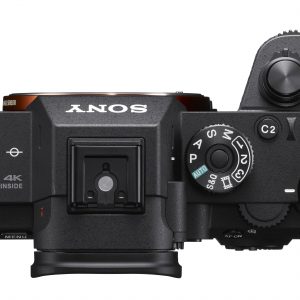
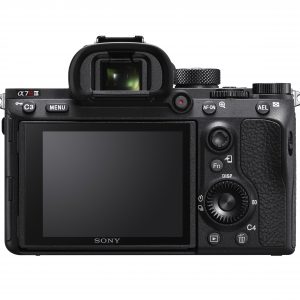
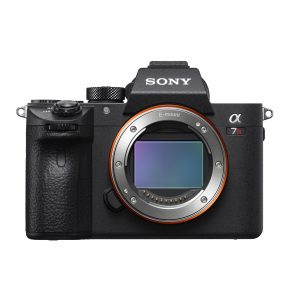
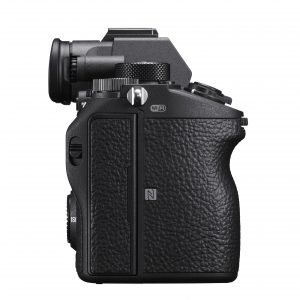
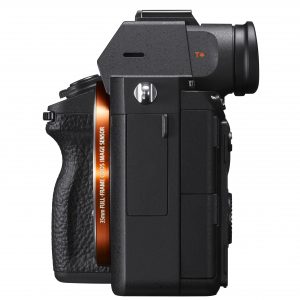
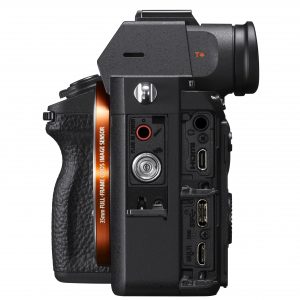
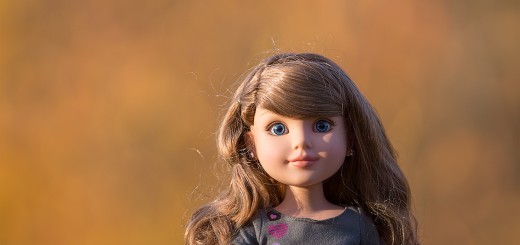
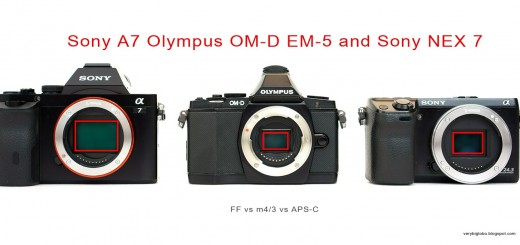
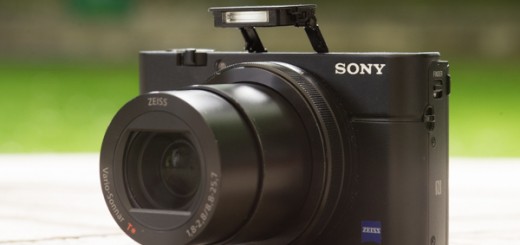













There’s lots to like here. A faster electronic shutter at full bit depth is big news. I use a Nikon 1 still and its most endearing feature is its ability to shoot silently and for me to be able to stack multiple shots without any vibration on a tripod. Multi shot should also come in handy for anything you plan to shoot on a tripod.
Hi Andrew,
I don’t have problems with the recent speed of the electronic shutter, but I am not shooting anything that moves fast or need hi speed sync. OTOH I can see multi-shot useful in some situations. It is all about what is our specialization and related needs. Thank you for your opinion!
6rigxa
2ip7ru
mc5qsv
qxegyt
wtgujr
7z9t4j
gu9zxs
7urbi7
1z997z
dlc9vi
wyxojg
yw8rkh